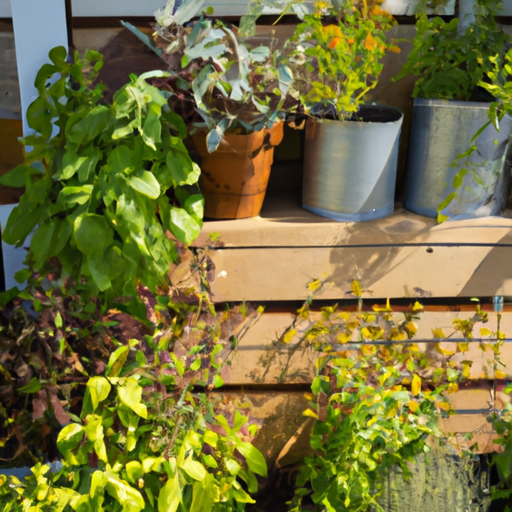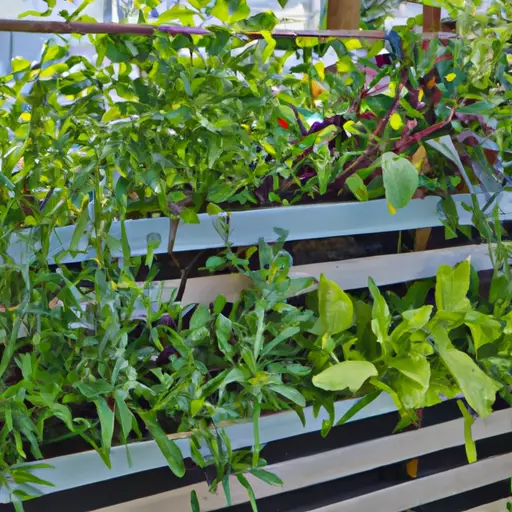Maximizing Limited Space with Vertical Container Gardening
In today’s fast-paced world, space is becoming a luxury. With the ever-increasing population, it is essential to find innovative ways to maximize limited space, especially when it comes to gardening. Vertical container gardening has emerged as a popular solution for urban dwellers and those with limited backyard space. This article will delve into the concept of vertical container gardening and offer tips on how to create your own green oasis in a limited area.
What is vertical container gardening?
Vertical container gardening is a technique that involves growing plants vertically rather than horizontally. Instead of utilizing vast expanses of land, this method focuses on transforming empty walls, balconies, or small corners into flourishing gardens by using containers or specially designed structures.
Benefits of vertical container gardening
1. Space optimization: The primary advantage of vertical container gardening is its ability to optimize limited space effectively. By utilizing vertical structures such as trellises, hanging baskets, or wall-mounted planters, you can make use of every available inch.
2. Aesthetically appealing: Vertical gardens are not only functional but also visually appealing. They transform dull walls and empty spaces into vibrant green landscapes. The cascading foliage and flowers create a unique and calming atmosphere.
3. Accessibility: Another benefit is the accessibility that vertical gardens offer. As the plants are grown above ground level in containers or hanging baskets, they are within easy reach for maintenance tasks such as watering, pruning, or harvesting.
4. Pest control: Compared to traditional ground-level gardens, vertical gardens may experience fewer pest-related issues. Elevated plants are less prone to ground-dwelling pests and diseases.
5. Improved air quality: Plants are natural air purifiers that absorb carbon dioxide while releasing oxygen during photosynthesis. By creating a vertical garden in your limited space, you can enhance air quality around you.
Tips for creating a successful vertical container garden
1. Select suitable plants: When planning your vertical garden, choose plants that thrive in container environments. Herbs, lettuce, strawberries, ivy, ferns, and succulents are excellent choices. Consider factors such as growth habit and light requirements to ensure your plants will flourish.

2. Assess sunlight availability: Before starting your vertical garden project, assess the amount of sunlight your chosen area receives. Some plants may require full sun exposure, while others thrive in partial shade. This information will help you determine which varieties to select for optimal growth.
3. Choose appropriate containers: When it comes to container selection for vertical gardening, choose lightweight options that can be easily mounted on walls or hung from supports. Hanging baskets, pocket planters, modular grids, or repurposed materials like pallets or gutters are all excellent choices.
4. Provide proper irrigation: Adequate irrigation is crucial for the success of your vertical garden. Ensure your containers have sufficient drainage holes to avoid waterlogging and provide regular watering according to each plant’s needs.
5. Consider structural support: If you plan to grow climbing plants or vegetables with vine-like growth habits, ensure you have a sturdy support structure in place. Trellises made of bamboo or metal are ideal for this purpose and provide stability while adding aesthetic value.
6. Maintain regular pruning and fertilization: Regular pruning will help maintain the desired shape and size of your vertical garden. Additionally, remember to fertilize regularly using appropriate organic or slow-release fertilizers to promote healthy plant growth.
7. Create a drip irrigation system: To simplify watering routines in a vertical garden setup, consider installing a drip irrigation system that provides water directly to each plant’s root zone while conserving water usage.
8. Incorporate trailing plants: Introduce trailing plants such as pothos or philodendron into your vertical garden design for added visual interest and cascading foliage that fills empty spaces beautifully.
Conclusion
Vertical container gardening offers a creative solution for maximizing limited space and bringing greenery into urban environments. By implementing the tips mentioned above and selecting suitable plants, containers, and structures, you can create a thriving vertical garden that not only optimizes space but also enhances the aesthetic appeal of your surroundings. Start transforming your limited space into a lush green oasis today!













